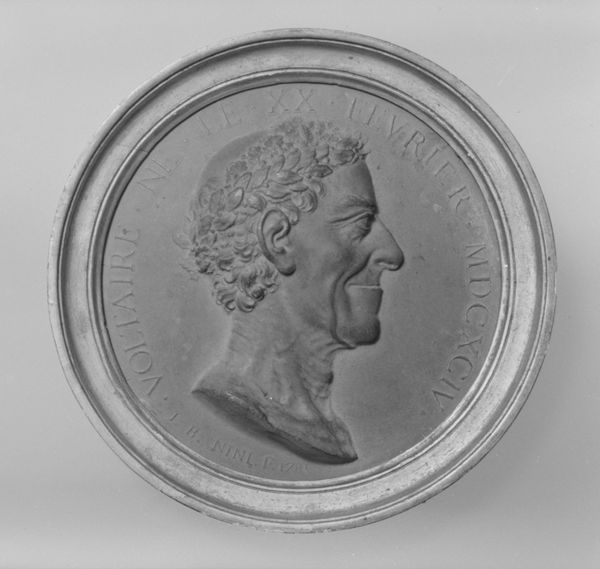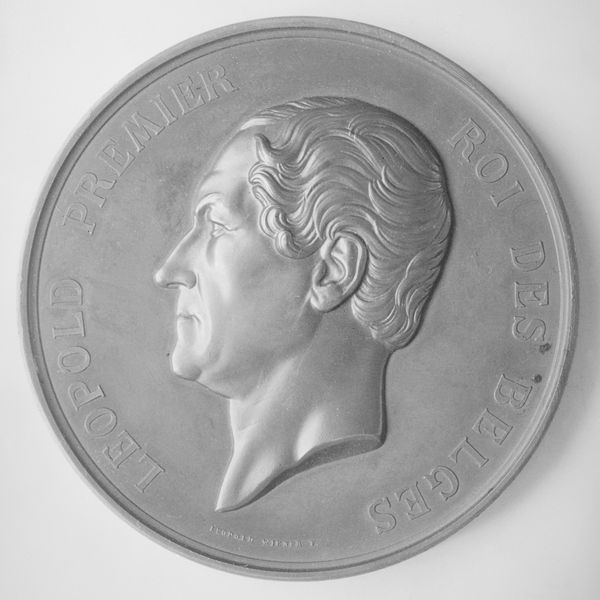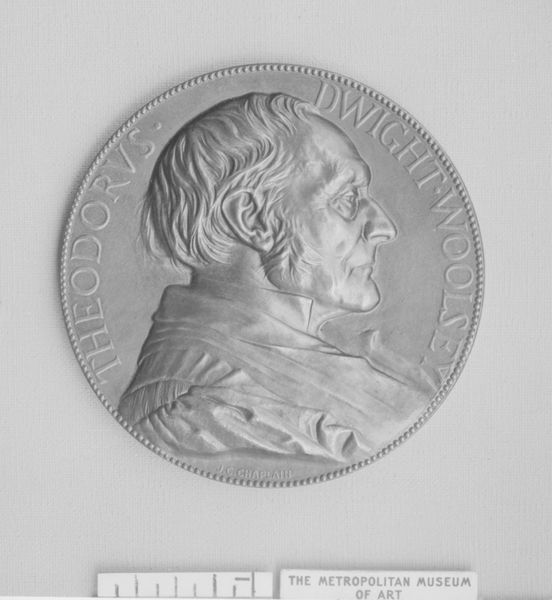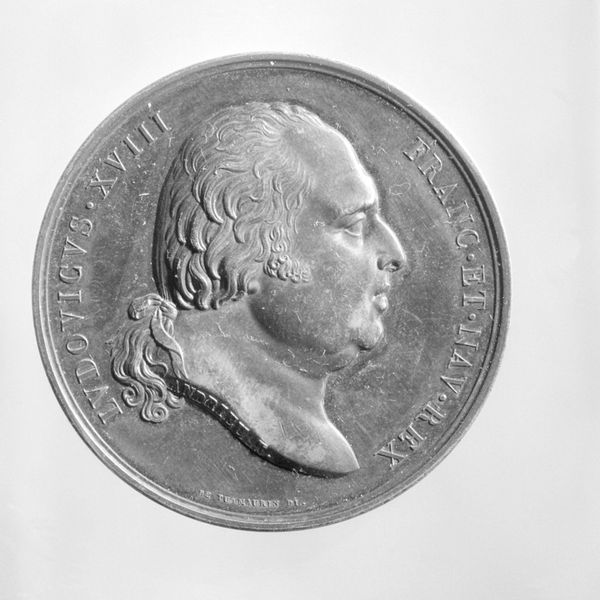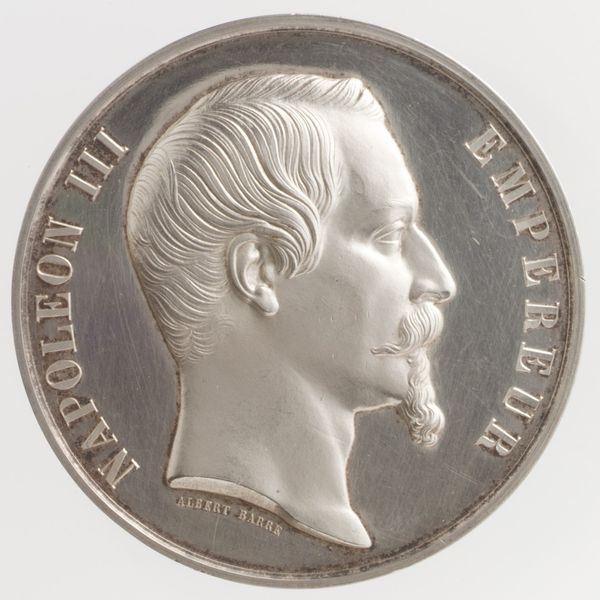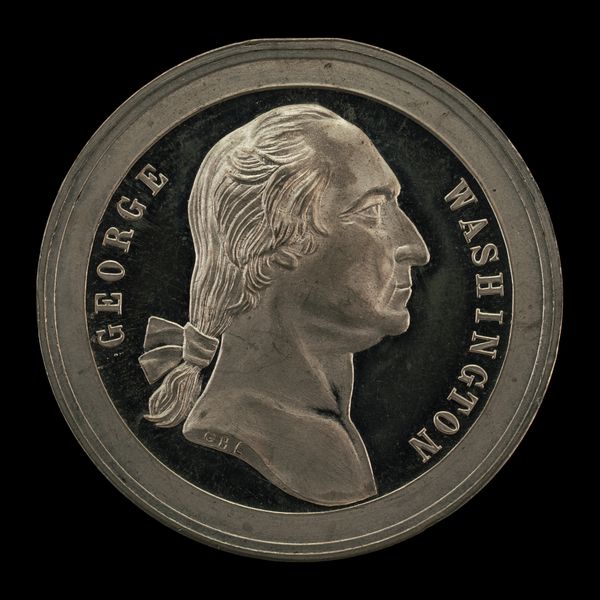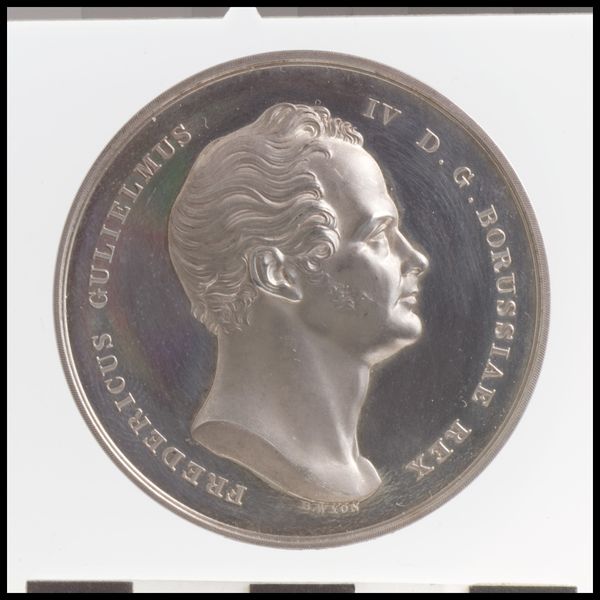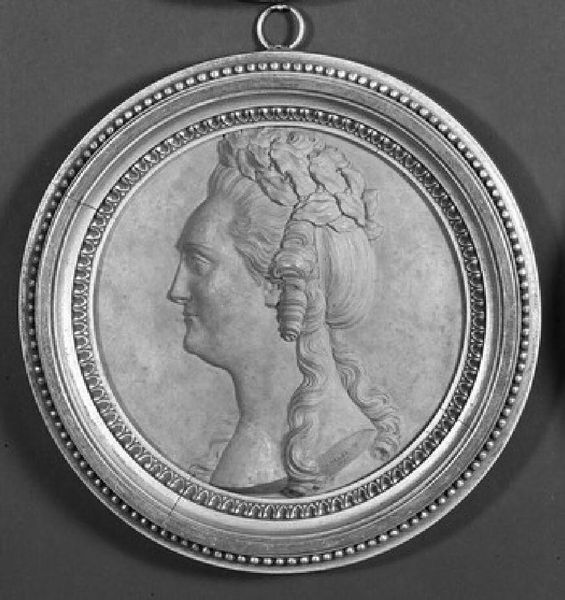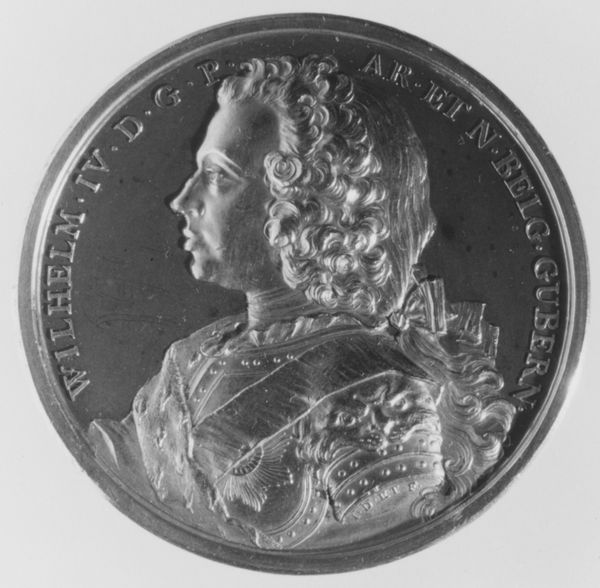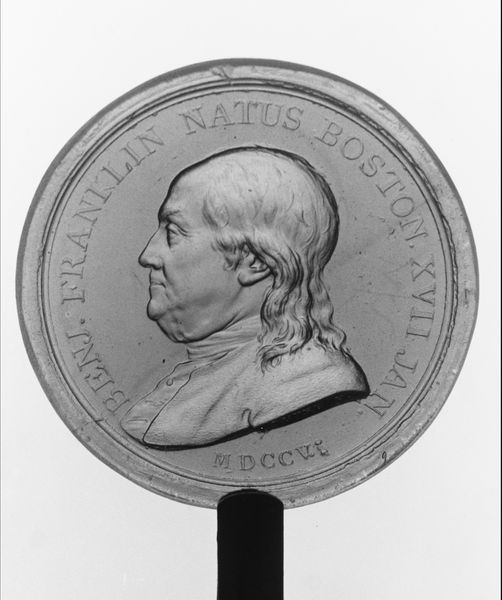
Dimensions: 22.5 cm (None) (None)
Curator: Here we have Harald Conradsen's 1859 plaster relief titled "Privy Councillor Jonas Collin", part of the collection at the SMK, Statens Museum for Kunst. Editor: It’s austere, in that classical portraiture style, almost like a Roman coin, but monumental at the same time. What strikes me most is how tactile the medium is here. You can almost feel the artist working and shaping it. Curator: It's a study in societal power and prestige rendered in a very accessible way. Jonas Collin was an extremely influential figure in Danish cultural life, essentially a gatekeeper to artistic and intellectual circles. It served as an affordable medium that still conveyed status, making portraits like this one more attainable for the rising middle class. Editor: The relief’s texture really adds to this accessibility. We can clearly observe the layered strokes used to render Collin’s face. This gives texture that mimics skin rather well for such a plain piece. Do you feel that his position within government would shape his appearance here, maybe affecting the piece? Curator: Absolutely, the piece is very indicative of the sitter’s esteemed role and influence in society. Conradsen depicts Collin with an air of dignity and authority. There's a smoothness to the overall carving suggesting the importance and power. Editor: Yes, the contrast between the soft facial features and the precise carved lettering is quite compelling! Thinking about the production process of plaster casts—the labor involved in creating molds, the repetition and skill needed to produce a perfect piece—it seems these reliefs, though 'accessible,' are quite involved and refined for mass consumption at the time. Curator: Precisely! This wasn't just about producing multiples, but maintaining a consistent quality. These were symbols meant to both idealize and commemorate. They provided the means to preserve an era for all interested in participating in the ongoing social dynamics, in both acquiring the materials and the cultural prestige. Editor: Looking at how the light catches the surface of the relief, you truly see the subtle marks left by the artist's hand. Curator: The work serves to show what values are put onto cultural figures that should exist eternally through image, and plaster allows this legacy to exist for the layman of society and future generations to analyze, not only based on the political landscape but the work it took to keep these names alive. Editor: An interesting observation. It gives a certain presence to Collin’s memory. A portrait, not of personality, but of societal influence manifested through this refined piece of craft.
Comments
No comments
Be the first to comment and join the conversation on the ultimate creative platform.
